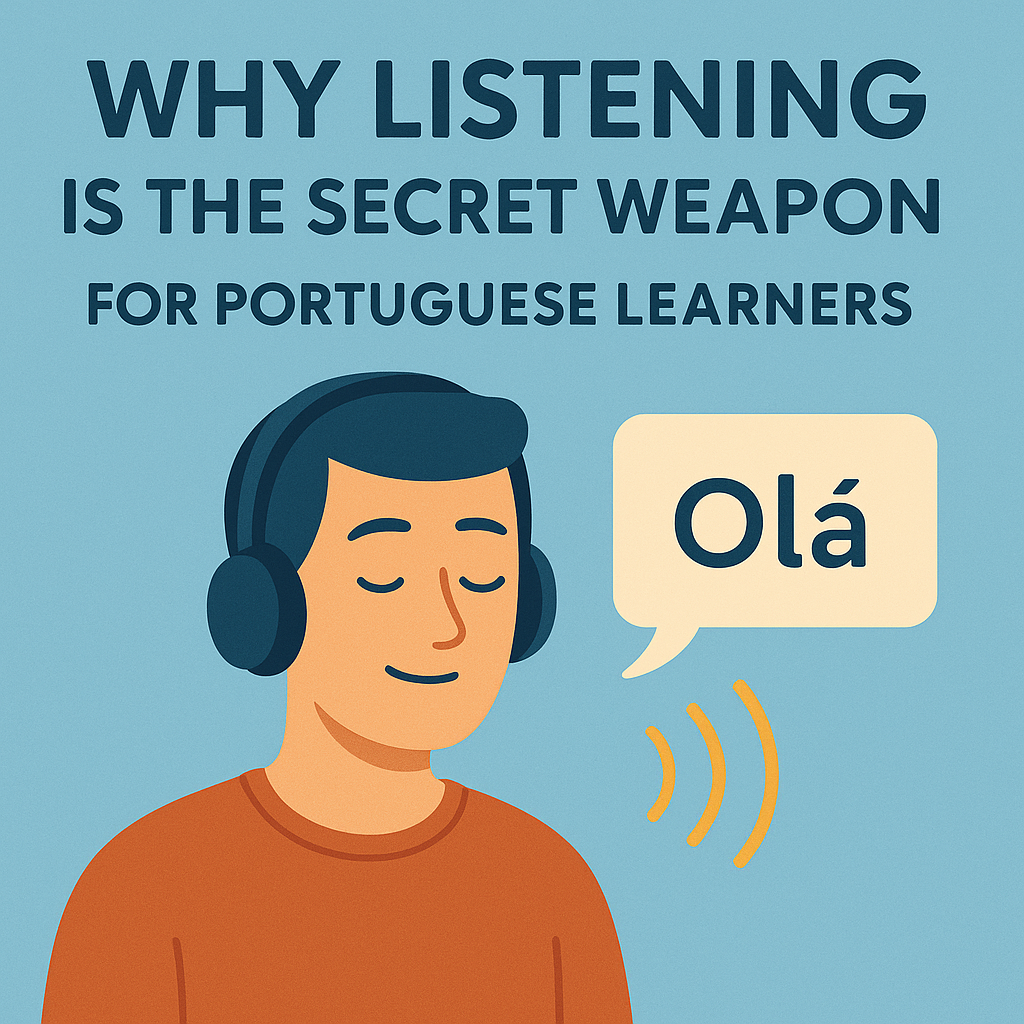
Learning Strategy & Planning
Why Listening Is the Secret Weapon for Portuguese Learners
If you’re serious about learning Portuguese, one of the best things you can do is start listening every day, right from the beginning.
Many learners spend a lot of time reading and studying grammar, but listening is what really unlocks the language.
Here’s why listening is your secret weapon.
1. Real Portuguese Sounds Fast and You Need Time to Adjust
European Portuguese is famously quick and can feel hard to understand at first. The sooner you start listening, the faster your brain will adjust to the rhythm, sounds, and connected speech.
Even if you don’t understand much at the beginning, you’re training your ear.
2. Listening Helps Your Speaking
When you hear real Portuguese, you learn natural pronunciation, intonation, and word stress. This will help you sound more authentic when you speak.
Even simple exposure to how sentences sound will make you more confident in conversation.
3. It Builds Comprehension Automatically
The more you listen, the more you’ll recognise common words and phrases in context, without needing to translate.
Listening helps you move beyond textbook Portuguese and into the real language that people actually use.
4. You Can Listen Almost Anywhere
Podcasts, radio, music, YouTube, Netflix — listening is easy to fit into your life, even if you’re busy. You can listen while driving, exercising, cooking, or relaxing.
It’s one of the most flexible and low-pressure ways to practise.
Quick Tips to Boost Your Listening
- Start with slow or learner-friendly content, then gradually try native-speed materials.
- Re-listen to the same content to help your brain notice new things each time.
- Don’t worry about understanding everything. Focus on recognising sounds, patterns, and familiar words.
Final Thought
Listening is the foundation of language learning. If you make it a daily habit, your Portuguese will improve faster than you think.
Don’t wait until you “feel ready”, start listening now.